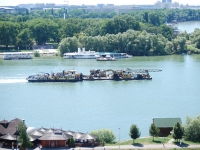Airport
Nikola Tesla Airport
IATA Code: BEGLocation: The airport is located about 11 miles (18km) from the city centre of Belgrade.
Time: GMT +2 (March to September); GMT +1 (October to February).
Contacts: Tel: +381 (0)11 209 4000.
Transfer between terminals: The airport consists of a single terminal building divided into two terminals.
Transfer to the city: Travel time into the city centre is about 20 minutes by bus or taxi. Several bus companies operate frequent services to various points in the city centre, the fare costing around 60 din. Tickets are sold on the bus. Taxis are freely available at the airport.
Taxis: Taxis are freely available at the airport. Taxi fare to the city centre is generally YUM 1000 for the 20 minute drive. Passengers are advised against using these taxis for areas outside of Belgrade as charges are unreasonably high. Travellers should also be wary of unlicensed drivers and touts who routinely overcharge tourists.
Car rental: Numerous local and international car rental agencies are represented at the airport, including Alamo, Avis, Budget, Hertz, National, Sixt and Thrifty.
Facilities: The airport features several banks and exchange bureau, as well as ATMs, most situated in the International Arrivals hall. There are two restaurants, a bar and snack kiosks at the airport. Several shops, selling everything from jewellery to foreign newspapers and souvenirs, are available in the main hall and duty free goods can be purchased beyond the passport control point. Several tourist information agencies have desks in the arrivals area, and the airport has excellent medical facilities.
Parking:
Departure tax: RSD 1,000 (international), RSD 500 (domestic).
Website: www.beg.aero
Visit worldtravels.com for the full guide to Belgrade. Build a complete Belgrade travel guide and email to your clients - sign up for a trial subscription of World Travels Pro.
Belgrade

'Come to a city where you will feel at home.' This is the call put out by the Tourism Organisation of Belgrade on its website, but one that potential visitors to Serbia's capital may feel is rather exaggerated, given the city's reputation as one of the most turbulent European cities. The history of Belgrade, originally known as Singidunum, goes back 6,000 years; the tales of conflicts and devastation it has experienced in all that time would fill many tomes. Belgrade, however, always bounces back and is currently lifting itself up and shaking itself off amid the scars of its most recent conflagration, when NATO forces bombed the city for 78 straight days in 1999.
Belgrade (or Beogradin Serbian) is situated in a strategic spot of south-eastern Europe where the Sava and Danube rivers join on the Balkan Peninsula. It is not a pretty city, but rather one layered with the relics of its many generations and invaders, resulting in a conglomeration of architecture and cultures, which have somehow melded together to imbue the modern city with its own unique charm. From the pile of rubble, which is all that remains of the bombed-out former military headquarters on Kneza Milosa, to the techno wildness of its famed nightclubs beneath the Kalemegdan Citadel, Belgrade tells many stories and offers dozens of experiences.
The best place to begin understanding the city is on the site of its original ancient settlement, the hill called Kalemegdan, now a fascinating park-like complex of historic buildings above the Old Town (Stari Grad). The Military Museum situated here traces the history of the city's bloody past, from its first conflict with the Roman Legions in the 1st century BC, to an exhibit of parts of a United States Stealth Bomber, shot down in the 1999 air raids.
Those who choose to ignore history and enjoy Belgrade as it is today will find a myriad of leisure and pleasure opportunities, all offered by the incredibly hospitable inhabitants who are justly proud of this indomitable city.







